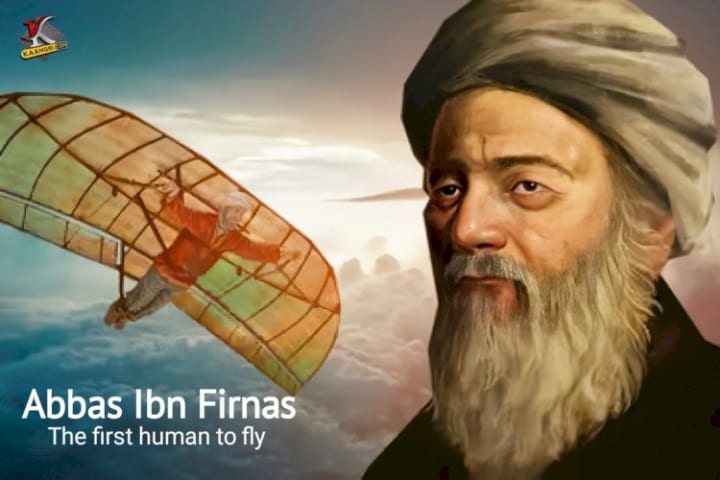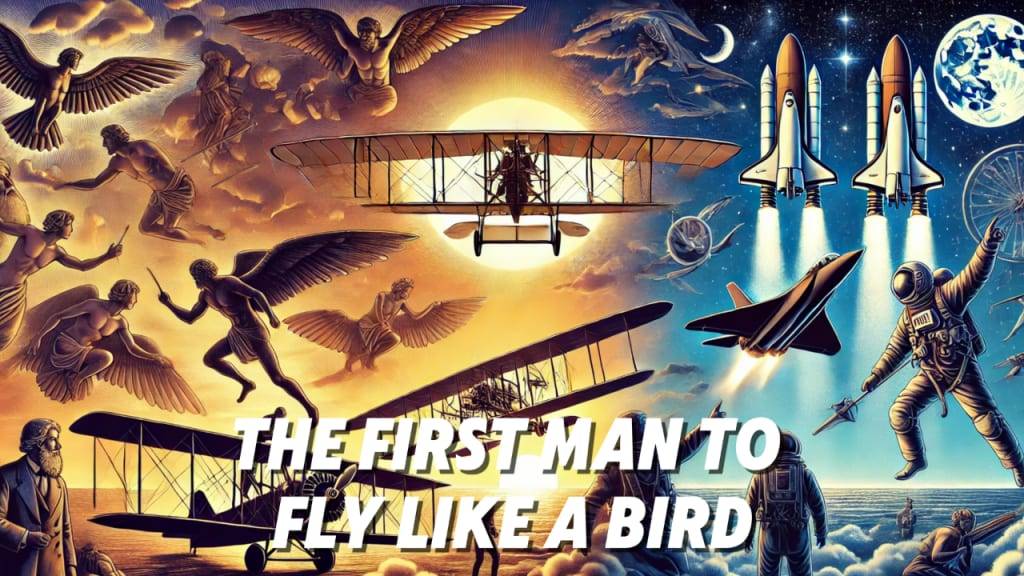When we discuss the origins of human flight, our minds often drift to the Wright brothers and their modestly named Wright Flyer, which first took to the skies in 1903. However, this historic flight represents just one step in a long and arduous quest that humanity embarked on more than a millennium earlier. In this article, we will explore the fascinating history of human flight, from ancient myths to modern marvels, highlighting the audacity, creativity, and resilience that have defined our struggle to conquer the skies.
Icarus: A Mythical Prelude to Flight
You might be familiar with the story of Icarus, the boy who flew too close to the sun, ultimately leading to his tragic downfall. This tale, stemming from Greek mythology, serves as a cautionary lesson about the dangers of hubris. Icarus and his father, Daedalus, crafted wings made of feathers and wax, allowing them to escape from Crete. However, Icarus's pride led him to soar too high, causing the wax in his wings to melt and him to plummet to the earth.
Interestingly, Icarus's tale has parallels in the real world, echoing some of humanity's earliest attempts at flight. One of the earliest recorded examples comes from the Andalusian polymath Abbas Ibn Firnas, who, in 875 A.D., covered himself in vulture feathers, strapped wings to his arms, and launched himself from a tall tower in Córdoba. His daring feat was akin to an enthusiastic participant in a modern Red Bull Flugtag event. Although he survived the jump—reportedly managing to glide for a brief moment before crashing to the ground—his attempt is often regarded as one of the earliest instances of human flight.

Despite the uncertainties surrounding Abbas Ibn Firnas’s actual flying abilities, his endeavour sparked the imagination of many who would follow in his footsteps.
Early Flight Experiments: Kites and Other Attempts
Fast forward about 400 years to ancient China, where Emperor Wenchang supposedly punished prisoners by forcing them to leap from a tower attached to large kites. Most met their demise, but one survivor, Yuan Huangtou, a son of a rival dynasty's emperor, is said to have endured the punishment and lived to tell the tale.
In the Ottoman Empire, another notable figure emerged—Lagâri Hasan Çelebi, who, in 1663, reportedly strapped himself to 60 kilos of gunpowder in Istanbul and launched himself over the Bosphorus. This event is often cited as one of the earliest instances of rocket-powered flight, albeit with dubious historical accuracy. The ongoing debate over whether these men were true flyers, fallers, or mere fakers is a testament to the murky history of early human flight attempts.
The Hot Air Balloon: A New Dawn for Human Flight
To pinpoint the first confirmed human flight, we must leap forward to 1783. That year, paper manufacturer Jacques-Étienne Montgolfier and his brother, Joseph-Michel, ascended into the Parisian skies in a splendid hot air balloon. Remarkably, their launch was preceded by an unmanned test flight featuring three curious passengers: a sheep, a duck, and a rooster. This odd trio was sent aloft to ascertain the safety of the skies for human travellers. The assumption was that if the sheep—a notoriously poor flyer—survived the journey, then it would likely be safe for humans to follow.
With this daring endeavour, humans had not only reached the skies but had also ignited an insatiable thirst for flight. Following hot air balloons, airships made their entrance in the form of the Zhifard dirigible, which wobbled skyward in 1852, demonstrating the French dominance in aviation innovation during this period.
Lighter Than Air vs. Heavier Than Air: The Quest for Flight
Both hot air balloons and airships fall under the category of lighter-than-air flight. As the name suggests, these vehicles achieve lift by displacing more air than they weigh, allowing them to float effortlessly. To give you an idea of how basic this principle can be, consider sky lanterns—those paper creations with a candle inside, often seen floating at festivals. They have existed since at least the first century A.D.
However, the journey to achieving heavier-than-air flight was far more complicated. It’s a miracle that a 500-ton commercial jet can ascend six or seven miles into the sky and remain there. This feat required overcoming numerous scientific, engineering, and technological challenges. The pioneering minds of Leonardo da Vinci, Galileo Galilei, Christian Huygens, Sir Isaac Newton, Leonard Euler, and many others laid the groundwork necessary to solve the riddle of flight.
Among these visionaries, George Cayley stands out as one of the true pioneers of aeronautics. He was the first person to propose a fixed-wing flying machine with distinct systems for lift, propulsion, and control. He also recognized the importance of using cambered wings to generate lift and identified the four forces that govern flight: weight, lift, drag, and thrust.
Cayley’s journey, however, was not without its challenges. The technology of his time did not yield a sufficiently lightweight engine to overcome the weight of the craft. Despite this setback, he successfully built the world’s first heavier-than-air flying machine, a glider, which took to the skies in 1853. He firmly believed that powered flight was imminent, given the right advancements in engine design.
The Wright Brothers: Pioneers of Powered Flight
Enter the Wright brothers: Orville and Wilbur, who made their historic flight in 1903. Although they were not the first to fly, nor were they the first to achieve powered flight, they did accomplish something monumental: the first controlled, sustained flight in a powered aeroplane. This achievement marked a significant milestone in the development of modern aviation, but it was only one step in humanity's long journey through the skies.
Interestingly, the Wright brothers were not alone in this quest. Before them, Frenchman Clément Ader managed to skim along for about 50 meters at an altitude of 20 centimetres in 1890, paving the way for further advancements. However, it was the Wright brothers’ ability to control and sustain powered flight that solidified their place in aviation history.
The Rapid Evolution of Aviation: From War to Travel
Meet the First Man to Fly Like a Bird. You'll definitely enjoy this!
The speed of progress in aviation following the Wright brothers' first flight is staggering. Just over a decade later, during World War I, aeroplanes advanced rapidly, giving rise to dogfights that remain a staple of warfare. After the war, aviation enthusiasts, including former fighter pilots, sought to connect the world like never before.
In 1919, John Alcock and Arthur Brown achieved the first non-stop transatlantic flight, and six years later, Charles Lindbergh made the solo trip across the Atlantic, marking a new era of air travel. Amelia Earhart, in 1932, became the first woman to cross the Atlantic solo, further cementing the role of women in aviation history.
The development of the jet engine began in earnest during this period, leading to the introduction of operational jet aircraft towards the end of World War II. Though late to the war effort, the jet engine sparked a revolution in air travel, enabling jets to fly higher, faster, and farther than their piston-powered predecessors. For the first time in human history, nearly the entire globe became accessible within a single day of travel.
The Age of Space Exploration
The dawn of the jet age was merely a prelude to the next chapter in human exploration: space. In 1961, Russian cosmonaut Yuri Gagarin became the first human to orbit the Earth in Vostok 1, achieving what many believed was the final frontier. Eight years later, Neil Armstrong made history as the first man to walk on the moon during the Apollo 11 mission.
It’s mind-boggling to think that within a mere 66 years—less than a typical human lifespan—we transitioned from rudimentary powered flight to landing on another celestial body. For those fortunate enough to have lived during this era, the contrast between pre-flight existence and post-space exploration is nothing short of extraordinary.
The Impact of Aviation on Modern Society
Today, air travel is an integral part of our daily lives—albeit occasionally disrupted by global events like the COVID-19 pandemic. It has opened up our planet in ways our ancestors could only have dreamed of, enabling us to explore distant lands and immerse ourselves in cultures that once seemed unattainable.
The pioneers of aviation made invaluable contributions to this vision, transforming what it means to be human. Their hard-fought victory against gravity through sheer tenacity, bravery, and ingenuity stands as one of humanity's greatest achievements.
However, if we were to shift our perspective and consider this entire saga through the eyes of a bird, it might appear rather amusing. Picture Abbas Ibn Firnas, tarred and feathered, leaping off a tower with reckless abandon. The relentless struggle of a species determined to defy gravity must seem downright hilarious from above.
Consider the countless man-hours spent pursuing this quest—hundreds of thousands, perhaps millions—while the average swallow can perform aerial feats that would leave even the most skilled fighter pilots awestruck. It puts things into perspective, doesn’t it?
Conclusion: The Ongoing Journey of Flight
The history of human flight is a testament to our insatiable curiosity and relentless pursuit of freedom. From the myth of Icarus to the modern marvels of aviation, each step has brought us closer to understanding the mysteries of the skies.
As we continue to explore the cosmos and push the boundaries of what is possible, we must remember the pioneers who paved the way. Their ingenuity and spirit of adventure remind us that the sky is not the limit; it’s just the beginning of our journey.
Thank you for joining us on this epic voyage through the history of flight! Remember to look up the next time you see a bird soaring overhead; you just might find inspiration for your own journey of discovery.


